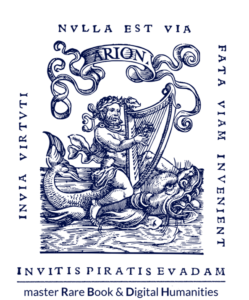The history of the University of Franche-Comté starts with the founding of the University of Dole by Philip III, Duke of Burgundy, also known as Philip the Good of Burgundy, in 1423. Dole was chosen over Dijon, which was at the time the capital of the county and a more important city with already renowned schools, and also over Besançon, which was the city where lived the archbishop. Dole was chosen for both its location near the center of the county and its quietness, appropriate for welcoming a place of study. Despite there being traces of a prior project for a university in the county of Burgundy by Othon IV during the 13th century, nothing was actually accomplished until Philip III obtained permission from the Pope to establish an university in his territory, making 1423 the starting point of the history of the University of Franche-Comté.
The university of Dole originally taught both civil law and canon law, and a faculty of theology was added in 1437. The school quickly rose in prominence in Europe and became known for the excellent teaching it provided, gaining students and even teachers from abroad. To provide numbers, in 1562, among the 268 students present in the university, only 45 were from Franche-Comté and the 223 others were foreigners, while many teachers were Italian or Flemish, a testament to the university’s reputation thourough Europe. During the 15th and 16th centuries, Burgundy was a free county independant from its close neighbours, the kingdom of France and the Holy Roman Empire. However, at the end of the 17th century, Louis XIV invaded the county of Burgundy and subdued the city of Dole. Because the city did not surrender to him, the king decided to strip it of its privileges. The university was transfered to another city in 1691, Besançon, which was made the capital of the region, and was renamed from the University of Dole to the University of Franche-Comté. The modern university of Franche-Comté is the inheritor of this institution.
This project aims to show the history of this institution that is now more than 500 years old. There are much more than simply the dates that are critical to understand why a university was an extremely important part for a city during the end of the Middle-Age and the Renaissance, the multiplicity of actors and factors involved in the foundation, funding and working of such institution. To make a solid base of information, books, articles and documents related the universities of Dole and Besançon were selected.
With my projects’ limits highlighted and written down to focus my researches, I have started to look upon the tools which would help me accomplish my project. My final goal is the creation of a website dedicated to retrace the history of the University of Franche-Comté. A website made with the goal of Digital Humanities in mind: using the digital media to provide a more accessible and engaging knowledge to the public outside of the humanities while also making the most of the advantages provided by the new technologies in term of data organization and analyze.
I’m now looking to extract all that I still need of the interesting data from the sources I’ve found and indexed in this Zotero archive. Once everything I have tagged as my primary sources is sufficiently filtered and written down, I will create a database and organize the piles of note which will be made on the side about the process by which I collected and filtered the data. Then, I will be able to plunge deeper into the preparation for core programming and coding. This will include but not be only limited to a better mastery of the XML and XSL language, as well as Omeka, the foundation of the future website. With the experience I will further obtain by working on the project with the BSG alongside my comrades, I will obtain side skills and insights outside my own perspective in domains such as website aesthetics, how to efficiently and correctly present data. Furthermore, I have the intention to make a good use of the lessons and tutorials put together by the researchers in Digital Humanities in the website « The Programming Historian ». Though not all of them will be useful for my project, it is nonetheless a goldmine of knowledge I will be using when making the next steps. The result I am aiming for now is a mock-up of the final website with the already organized data within, which will be further and further corrected and improved upon until I have a satisfactory final result.


